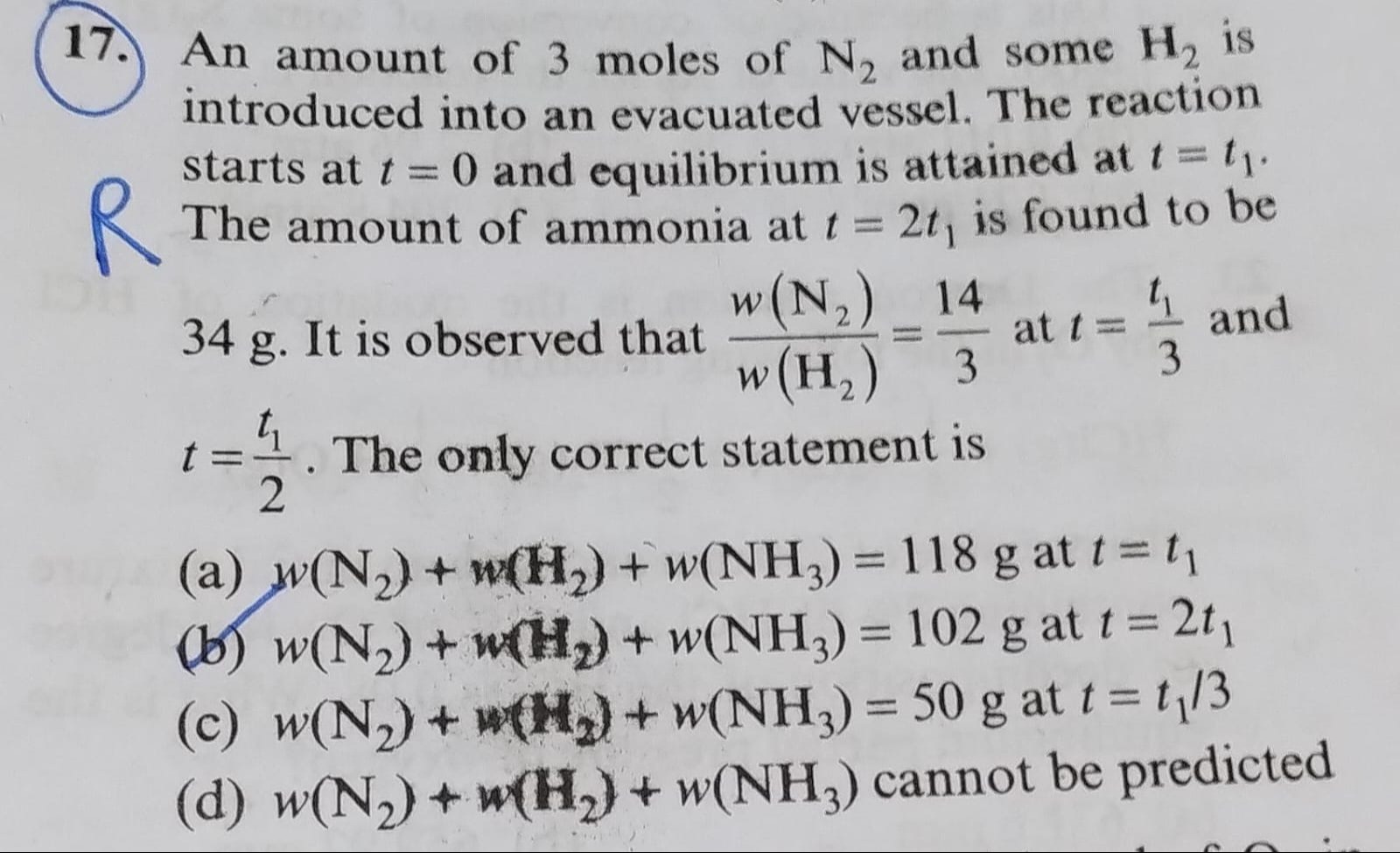Question
Question: An amount of 3 moles of $N_2$ and some $H_2$ is introduced into an evacuated vessel. The reaction st...
An amount of 3 moles of N2 and some H2 is introduced into an evacuated vessel. The reaction starts at t = 0 and equilibrium is attained at t = t1. The amount of ammonia at t = 2t1 is found to be 34 g. It is observed that w(H2)w(N2)=314 at t = 3t1 and t=2t1. The only correct statement is

w(N2) + w(H2) + w(NH3) = 118 g at t = t1
w(N2) + w(H2) + w(NH3) = 102 g at t = 2t1
w(N2) + w(H2) + w(NH3) = 50 g at t = t1/3
w(N2) + w(H2) + w(NH3) cannot be predicted
w(N2) + w(H2) + w(NH3) = 102 g at t = 2t1
Solution
The reaction is N2(g)+3H2(g)⇌2NH3(g). Molar masses: M(N2)=28 g/mol, M(H2)=2 g/mol, M(NH3)=17 g/mol.
The mass ratio w(H2)w(N2)=314 implies n(H2)×2n(N2)×28=314, which simplifies to n(H2)n(N2)=31. This mole ratio is the same as the stoichiometric ratio, meaning the initial mole ratio of N2 to H2 must have been 1:3. Given initial moles of N2 = 3 mol, the initial moles of H2 must be 3×3=9 mol.
Initial mass of N2=3 mol×28 g/mol=84 g. Initial mass of H2=9 mol×2 g/mol=18 g. Total initial mass = 84 g+18 g=102 g.
By the law of conservation of mass, the total mass of reactants and products in a closed system is constant. Thus, w(N2)+w(H2)+w(NH3)=102 g at all times.
